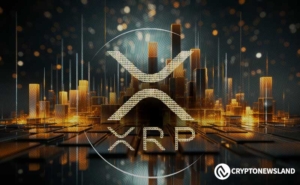Hong Kong’s Strategic HK$500M Crypto Investment: A Catalyst for Mining and Web3 Growth
- Hong Kong’s HK$500M crypto investment and 2025 Stablecoins Ordinance aim to establish the city as a global digital asset hub through regulated innovation. - The framework mandates 100% reserve-backed stablecoins and attracts $1.5B in July 2025, while RWA tokenization grows 380% to $24B by 2025. - Institutional players like SenseTime and Fosun prioritize blockchain, mining, and RWA infrastructure, leveraging Hong Kong’s pro-crypto stance over Singapore’s restrictions. - Early-stage investors benefit from
Hong Kong’s digital asset ecosystem is undergoing a seismic shift, driven by a confluence of regulatory innovation, institutional capital, and strategic market positioning. At the heart of this transformation lies a HK$500 million investment—allocated by private firms like SenseTime Group to blockchain, stablecoins, and real-world asset (RWA) tokenization—that signals a pivotal moment for early-stage investors. This allocation, coupled with Hong Kong’s August 2025 Stablecoins Ordinance and Policy Statement 2.0, underscores a deliberate effort to cement the city as a global hub for crypto innovation while mitigating risks through robust oversight.
Regulatory Clarity as a Foundation for Growth
Hong Kong’s Stablecoins Ordinance (Cap. 656), effective August 1, 2025, has established a licensing regime for fiat-referenced stablecoins (FRS) under the Hong Kong Monetary Authority (HKMA) [1]. This framework mandates that stablecoin issuers maintain 100% reserve asset backing, minimum capital of HK$25 million, and liquidity to cover operational volatility [1]. By aligning with Basel-aligned standards and offering a closed-loop distribution model through licensed intermediaries, Hong Kong has created a regulatory environment that balances innovation with investor protection. This clarity has already attracted over $1.5 billion in July 2025 from fintech firms seeking to capitalize on the city’s crypto-friendly policies [2].
The Policy Statement 2.0 further amplifies this momentum by prioritizing RWA tokenization, a sector that has grown 380% in three years to $24 billion in 2025 [3]. Tokenized government bonds and real-estate assets are now on the regulatory radar, offering investors a bridge between traditional finance and decentralized ecosystems. This dual focus on stablecoins and RWAs positions Hong Kong to dominate cross-border transactions, particularly as mainland China’s regulatory stance on crypto remains cautious.
Institutional Confidence and Sector-Specific Allocation
The HK$500 million investment by SenseTime Group in July 2025—allocated to blockchain, stablecoins, and intelligent robotics—exemplifies institutional confidence in Hong Kong’s digital asset strategy [4]. While the firm’s primary focus is AI, its blockchain division is leveraging the city’s regulatory framework to develop scalable solutions for DeFi and mining infrastructure. This allocation reflects a broader trend: institutional players like Fosun International and LineKong have committed capital to tokenized assets, signaling a shift from speculative trading to utility-driven adoption [5].
Mining and DeFi, in particular, stand to benefit. Hong Kong’s stablecoin regime reduces the volatility risks associated with crypto collateral, enabling miners to hedge exposure while DeFi platforms tokenize real-world assets for liquidity. The city’s proximity to mainland China—a critical market for energy-efficient mining—further enhances its strategic value. As of August 2025, at least 10 Hong Kong-based fintech firms have raised $1.5 billion to fund these initiatives, with mining infrastructure and cross-border payment solutions emerging as top priorities [2].
Market Implications for Early-Stage Investors
For early-stage investors, the alignment of regulatory momentum and capital inflows presents a unique window of opportunity. Hong Kong’s licensing regime limits stablecoin issuance to a select few, creating a scarcity premium for compliant projects. Similarly, the tokenization of RWAs—backed by government incentives—offers a low-risk entry point into crypto markets.
The city’s competitive edge is further reinforced by its rivalry with Singapore and the U.S. While Singapore’s 2025 crypto clampdown restricts DeFi experimentation [3], Hong Kong’s Basel-aligned standards and pro-innovation stance attract global capital. The Trump administration’s pro-crypto policies have also spurred investor migration to Hong Kong, where regulatory agility and geographic proximity to Asia’s largest economies provide a strategic advantage [4].
Conclusion: A Call to Action for Investors
Hong Kong’s HK$500 million investment is not an isolated event but a symptom of a larger, institutional-grade shift. By combining regulatory foresight with strategic capital allocation, the city is positioning itself as a linchpin in the global digital asset ecosystem. For early-stage investors, the message is clear: act now to capitalize on a market where innovation is scaffolded by oversight, and where mining, DeFi, and RWA tokenization are poised for exponential growth.
Source:
[1] Hong Kong Implements New Regulatory Framework for Stablecoins
[2] Hong Kong's Crypto Bet Is Starting To Pay Off
[3] Hong Kong Is Future-Proofing Its Crypto Ambitions With a
[4] Eric Trump talks Bitcoin in Hong Kong
Disclaimer: The content of this article solely reflects the author's opinion and does not represent the platform in any capacity. This article is not intended to serve as a reference for making investment decisions.
You may also like
Fed Opens Up Direct Payment Pathway for Cryptocurrency Firms
In Brief The Fed introduces a new payment model for cryptocurrency firms. Waller's proposal emphasizes narrow banking for stablecoin issuers. The plan balances regulatory, liquidity, and competitive aspects.

XRP Eyes $2.90 Breakout as Ripple’s Prime Strategy Sparks Bullish Momentum

SHIB Struggles to Stay Afloat as Selling Pressure Mounts — What Next for Shiba Inu?
